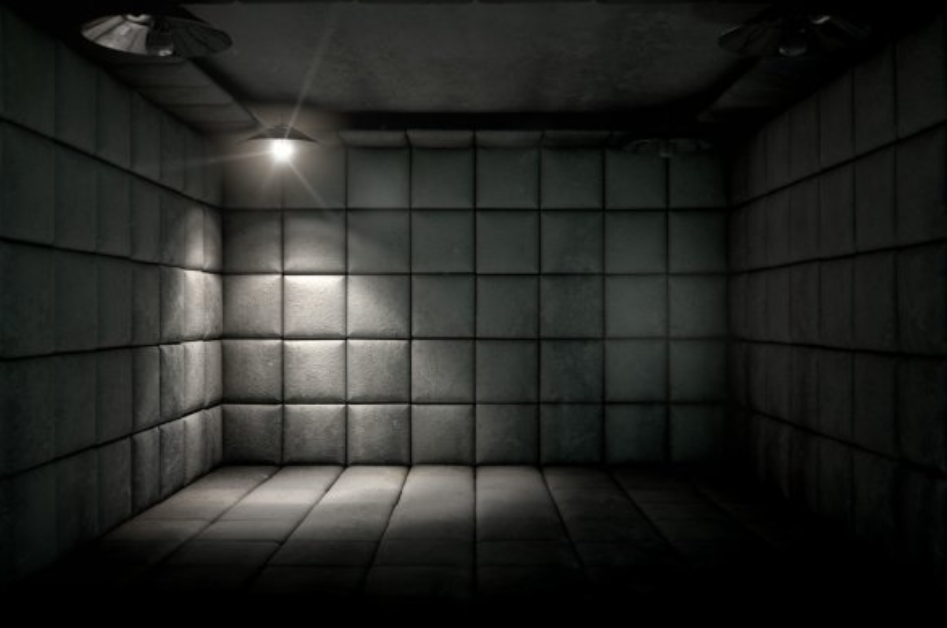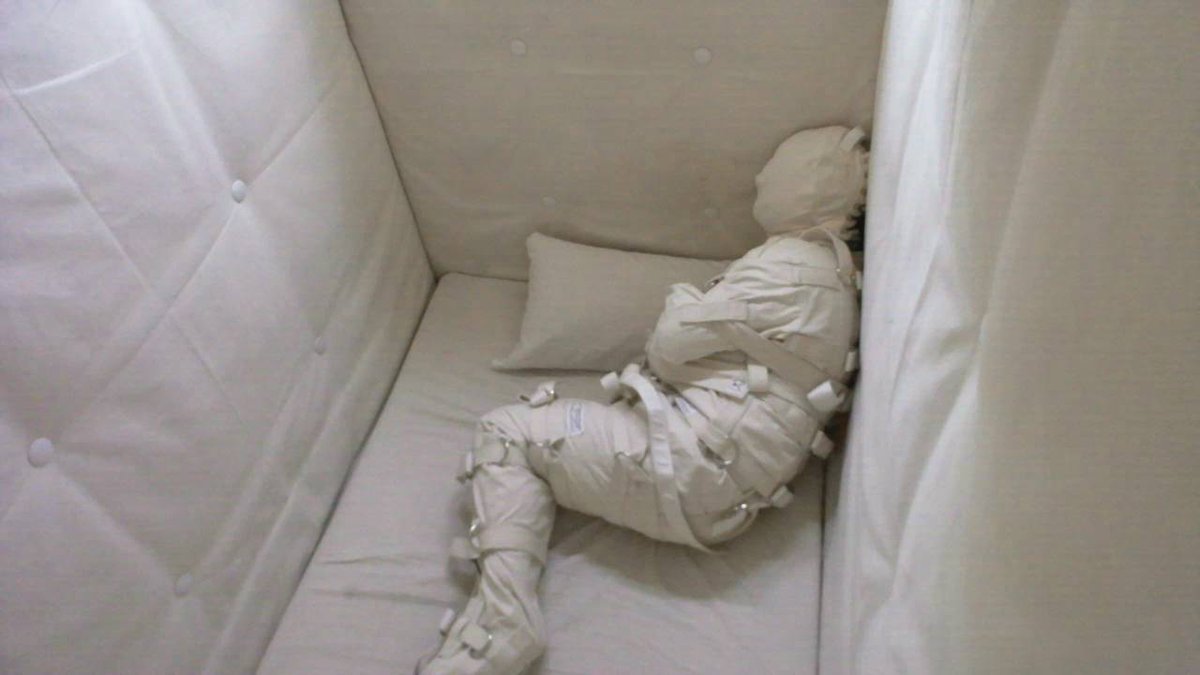
By Monique Luetkemeyer – Part 1 of 1
Email: moniquel319@gmail.com
Thoughts for Novelists and Screenwriters
One evening I settled in to watch the latest M. Night Shyamalan movie, GLASS. I had been anticipating this one for a while. However, it wasn’t long before I was cringing and shaking my head at how inaccurate and unbelievable the director made the psychiatric hospital. Even the most basic security measures weren’t included in their story. It was clear they did not talk to a single mental health professional prior to making the film. It ruined the entire experience for me.
I have all but given up on watching any movie with themes of psychiatric care or mental health because the vast majority either contribute to stigmas surrounding mental health, or are so laughably incorrect that I can’t take them seriously. But the consequences of poorly researched movies reach a lot further than my own discontent.
As a psychiatric nurse, part of my job is to assess new patients and give them a tour of our unit, explaining how things work. Many times the person I’m interviewing has never been in a psych hospital before. I’ll give you an example of a typical reaction.
“What brings you to the hospital?”
“I didn’t want to come. Quite frankly, I’m terrified.”
“What questions do you have?”
“Am I going to be locked in my room?”
“No. However, if you are uncomfortable, I can lock your door from the outside. You can still get out, but no one without a key can get in. Similar to a hotel room.”
“Are there crazy people here?”
“Everyone is here for a reason. However, on this floor the vast majority of patients are here because they struggle in the same ways you do. Of course for privacy, we can’t discuss what other people are struggling with, but it’s important to know you are not alone.”
“Do people leave here? Do they go back to their life?”
“A typical stay is five to seven days. However, you and your treatment team make that decision together. And yes, many people that leave here have successful lives.” “This is nothing like what I’ve seen in the movies. Everyone is so nice. I’m relieved.” Every time this discussion happens I wonder, how many people die rather than getting help because they are terrified based on what they have seen in movies and read in
books. Also, for those that are in the hospital, how many think they have hit rock bottom and there is now no hope for them? None of that is true, yet mental health professionals fight those ingrained beliefs every shift we clock in.
The good news is, you can help save lives by changing the stigmas of mental health and psychiatric care in your books and screenplays. Just as any astrophysicist or well-researched science fiction author would balk at someone getting the particulars about physics and space incorrect it’s the same for those of us in the field of mental health watching as time after time, psychiatric hospitals are portrayed as torture prisons where drooling zombielike patients shuffle through dingy corridors on their way to being placed
in their straight jacket to sleep for the night. Let’s look at some examples of movies that got it wrong and some that did it right. Warning this WILL include spoilers.
12 MONKEYS (1995), starred Bruce Willis and Brad Pitt. It was written by Chris Marker and David Webb Peoples and directed by Terry Gilliam. The movie takes place in the future where a virus has devastated the population and pushed the survivors into a subterranean existence. A convict is sent back in time to gather information to help scientists find answers to how the virus was spread, and how to stop it so they can eventually return to the surface. During his foray back to our time, the convict lands himself into a psych hospital as he spews what appears to be crazy talk about what is to come.
The psych hospital itself is the first issue. Paint is peeling off the walls. Everything appears to be rusted and in disrepair. The patients are kept behind bars. They are all crowded, into a single room which is supposed to be some kind of common area. They are locked in, and it appears they do not even have their own rooms but sleep barracks style.
Additionally, the patients are depicted as out of control, screaming, drooling, and making strange awkward moments in mirrors and generally preoccupied in their own worlds. The staff make fun of the patients and are portrayed as incompetent and unable to control what is happening in the facility. Their interventions include telling patients to “be calm” and wrestling them to the floor when they get too loud. And the main villain is one of the patients. Some other minor errors include not letting patients make phone calls, (even prisoners get to make phone calls. It is a right.) and a doctor giving an injection through a patient’s gown.
Now let’s look at the reality. Unlike 12 MONKEYS, an accrediting body inspects the physical building of each hospital every other year. Everything must be in good repair or the facility will lose its accreditation. Additionally, patients have rooms. Sometimes rooms are shared, but no more than two people are in a room.
It isn’t all bad though. The movie does a good job accurately depicting mania, and its symptoms such as echolalia, hyperverbal and tangential speech, and grandiosity in Brad Pitt’s character. That might be more of a nod to Brad Pitt’s own research rather than the writers or director though. Also, there are a lot of staff present, indicating some idea of ratios for safety as well.
GLASS (2019) was written and directed by M. Night Shyamalan. It depicts a man with supernatural powers tracking down two criminally insane inmates. The criminal inmates are inexplicably housed in a psychiatric hospital instead of a prison and kept behind one locked door that leads directly into a patient’s room. In the movie, the staff regularly enter the room alone without giving the patient an opportunity to show his compliance by following specific directions such as, “sit on your bed and don’t move until we have left.”
This kind of precaution is standard when dealing with unpredictable patients. In reality, those convicted of very serious crimes are kept in secure psychiatric facilities within a prison or sometimes in a state hospital. Although community psychiatric hospitals do care for violent people, generally the level of safety measures required to house someone like that do not lend themselves to the healing atmosphere of a hospital.
However, security measures for violent or dangerous patients that are housed in a psychiatric hospital are much stricter than what the movie portrays. There is no way a patient could escape in the various depictions the movie shows. For instance a worker is killed because he is stabbed with a shard of glass from a picture he had hanging on his wall. We have literally dozens of safety procedures in place to keep those exact things from happening. Absolutely no glass or metal is allowed on any psych unit and even
plastic is closely monitored.
Now let’s look at the patients themselves. I outlined the clichéd trope of a group of psych patients above in the movie 12 MONKEYS, where they are portrayed as one step above animals, completely disorganized and overmedicated. This trope was so prevalent in earlier movies that writers of a later movie, GIRL INTERRUPTED (1999) created a scene utilizing that stereotype as a way of showing what other people think of psychiatric patients in contrast to reality. In the scene a group of patients are on an outing, celebrating a long-term patient’s upcoming discharge. One of the patients is confronted by an angry female acquaintance at an ice cream shop. When the intruder becomes belligerent, the group of girls began yelling and slapping themselves and the tables in an attempt to scare the rude woman off. They stop with their antics and laugh when she leaves, showing they were actually completely in control of their behaviors and were simply putting on a show.
GIRL INTERRUPTED, originally a book written by Susanna Kaysen was later turned into the screenplay for the movie directed by James Mangold. The movie is based on the author’s own experience in a psychiatric hospital in the 1960’s. In contrast to GLASS and 12 MONKEYS it gets a lot of things right about what actual psychiatric care in a hospital looks like. It seems being an actual patient, makes a decided difference in the presentation. For instance the patients, although clearly sick, look normal, you wouldn’t know they were patients out in public. The hospital has real safety practices in place such as fifteen-minute checks where every patient is accounted for every fifteen minutes. Patients are not overmedicated zombies doing a Thorazine shuffle through the halls of a facility that is one step away from falling down. The rooms are bright, clean and in general well kept. However, the movie does have its issues with some stereotypes. For instance, the patient diagnosis is incorrect and doesn’t make clinical sense as it assumes everyone in a psychiatric hospital has hallucinations. However, overall, the movie does an excellent job showing that people recover and move on and that the hospital isn’t prison.
There are many movies providing accurate depictions of the actual symptoms of various disorders. However, even excellent examples have their problems.
As Good As It Gets (1997) was written by Mark Andrus and directed by James L Brooks.
The movie tells the story of an unlikely friendship of an OCD author, a gay artist, and a single mom. The creators did an excellent job explaining the struggles of OCD. However, as a consequence of that depiction, hand washing, door lock checking, and hypervigilant cleanliness became so tightly associated with having OCD that it became a standard in every OCD character created for the next decade.
Media, indeed, has a profound effect on how our society defines mental health. And while compulsive behaviors are absolutely a part of that disorder, they do not define the entire illness. I’m not saying the writers did a poor job by choosing those compulsive behaviors. On the contrary they did an excellent job and clearly invested in a lot of research. They could not have foreseen the impact their depiction of OCD would have. I am saying others who do not invest in their own research will lean on the writers that did.
Don’t be one of those writers. Writers must do their own research. If they did, we would have a rich, varied and more complete picture of what suffering from OCD is really like. Instead we have a caricature of the disease represented in much of the media depictions.
Additionally, when characters are defined by their mental illness with all motivations for their behaviors blamed on their disorder, it creates a shallow, one-dimensional person, and this person is often depicted as the villain. Writers are missing a huge opportunity to create a deep, three-dimensional character who adds meaning and richness to their story and can have their own hero's journey as they progress. Mental illness offers complexity and often a deep dive into trauma, pain and, if the author is willing, redemption.
This article can not go into every detail of what writers get wrong in mental health. Misrepresentations and ingrained stigmas can have a profound impact when you consider their role in skewing a person’s view. Who would voluntarily check themselves into a place like those depicted? Or drop their loved one off for care? However, my hope is that writers at least see that they can enhance their story and avoid contributing to stigma simply by doing research and/or consulting with an expert. They may even save
a life.

0 Comments